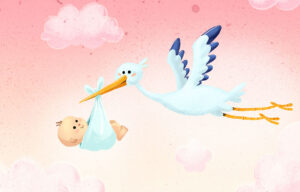
Hello Beautiful
A New Dad Reports: The Things No One Tells You About Having a Baby (During a Pandemic)
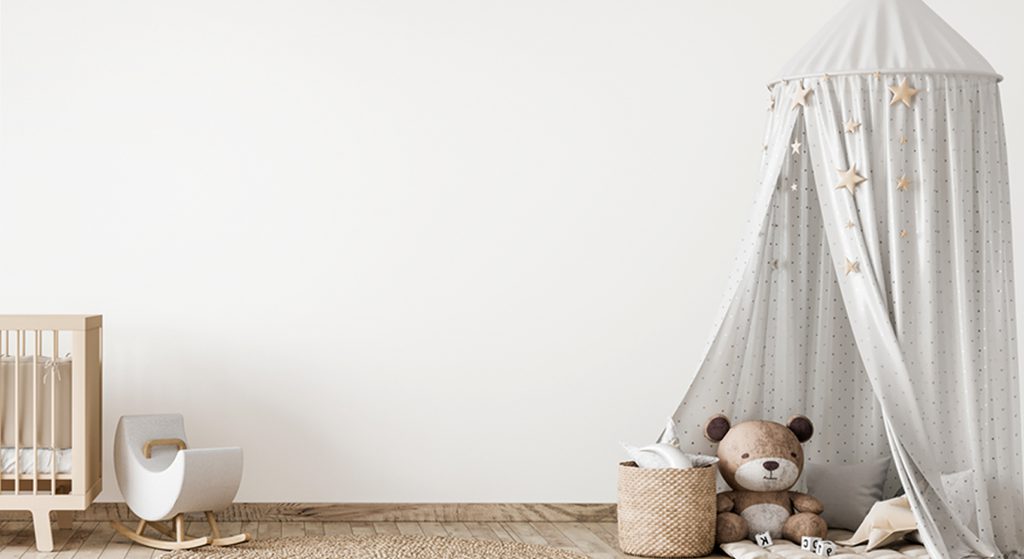
On the day Annabella was born I was 41 years, 42 days old. Our birthdays are exactly six weeks apart, mine on April 4th and hers on May 16th. This means they will always be on the same day of the week. Annabella was born on a Saturday, and six weeks earlier I celebrated my birthday on a gloomy Saturday in Anchorage. When she turns one, and I 42, our birthdays are on a Sunday. Annabella will become a teenager on a very anticlimactic Monday but her 18th birthday will happen on a Sunday, a weekend at least. In the year 2040, she will turn 20 on a Wednesday. Six weeks earlier, I will turn 61. By the time Annabella is 30, I will have reached my 70’s. Beyond that the calculations only get more grim.
Nothing makes you think of your own mortality like having a baby.
“I can’t decide if you look old or tired,” Victoria said after taking a photo of me and five-week-old Annabella on our first Father’s Day together.
“What!?” I popped back, “I don’t look old!” It was true though, I saw it too. A spider web of wrinkles encroaching on my eyes, flecks of grey merging into two-day stubble, once-taught skin along my neck now folding into shadows and creases. What can only be referred to as jowls were forming parentheses around my mouth. It all seemed to be converging at once.
The stark contrast with a newborn didn’t help. Here I was, appearing to pose for AARP magazine while Annabella stared off serenely, her liquid skin and gem-colored eyes as fresh as morning dew. Flicking through the photos on my phone it felt as if we were speeding through the decades. Swipe. It’s our first Father’s Day together. Swipe. I’m gray and hunched over in my mid-50’s coaching youth soccer. Swipe. Annabella is holding my cane and helping me climb aboard a grocery-store scooter.
Before I reached my death, I was startled back to reality and noticed I’d spilled a pool of tea from my mug on the coffee table. “Uh-oh. You want some help with your tea, bud?” Victoria said with the tone of an in-home caretaker.
“Nope,” I shot back, choking on my first sip.
I found myself daydreaming about who this little person Annabella might become in the distant future, the landmark firsts—walking, talking, school, graduation, and so forth—but more often what her voice will sound like as an adult, who she’ll spend her time with, whether she’ll be loving and sweet or tough and sassy, what she might love or hate. These thoughts are always dogged by a worry: I hope I’m there for it.
At 41, I was feeling like a pretty old new dad.
A few nights earlier on a walk Victoria asked, “Don’t you think it’s sad we won’t see Bella as a little old lady?”
“I can’t even answer that right now,” I replied.
And I couldn’t. I was still stuck in Annabella’s future teenage years, wondering what she keeps in her locker at school or what new freedoms she’ll beg us for. I was clamoring for every last day with her, mood swings and all, and here Victoria already had her getting senior discounts at the movies. Talk to me in a couple of weeks, I thought. These must be the musings of older parents. It’s morbid to think about life and death this way, but it occurred to me that maybe it’s because we’re often so inundated with it.
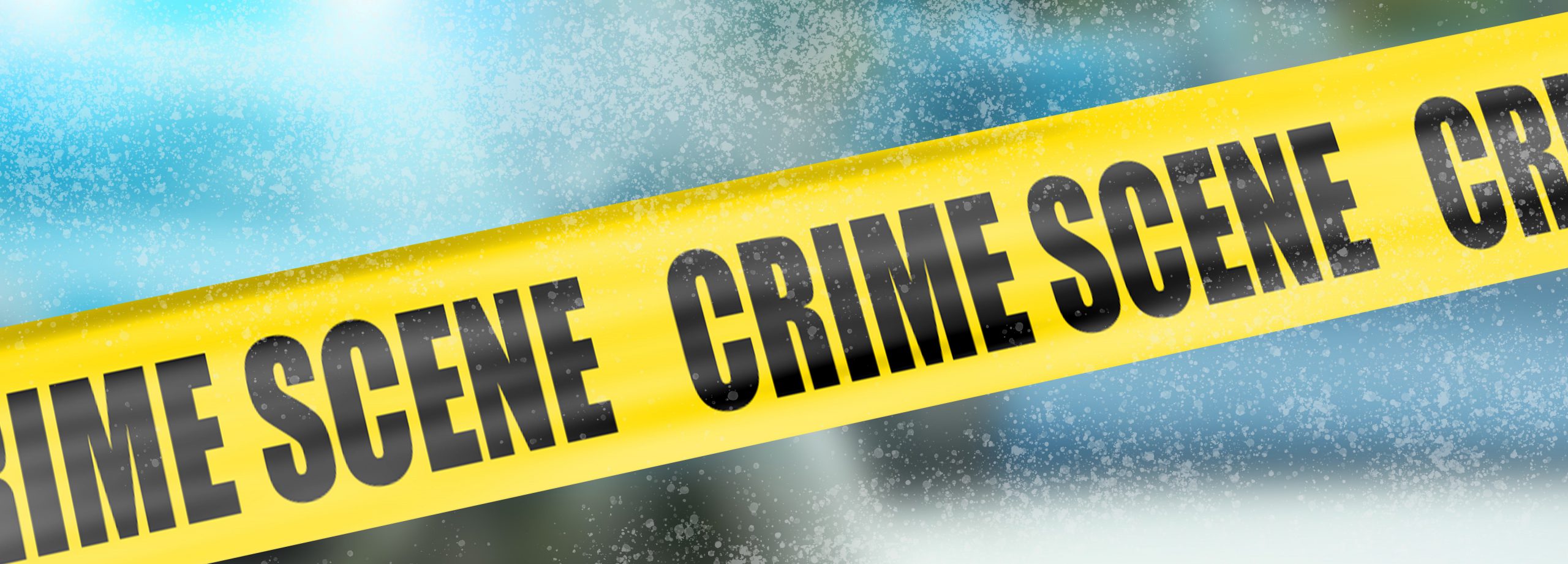
This was the age of the deadly COVID-19 global pandemic after all, and we lived in Alaska, a state that, in normal times, tends to kill people in all sorts of creative ways—bear maulings, drownings, cliff plungings, freezing to death, avalanches, mangled car crashes, or just plain getting lost in the wilderness and never being heard from again. Just a year and a half before Annabella was born we lived through a magnitude 7.1 earthquake in Anchorage which, though terrifying and destructive, somehow claimed zero lives, a fact that presented itself as a warning: You’re all just barely surviving this place.
That night I awoke in the early AM hours and couldn’t fall back to sleep. Reaching instinctively for my iPhone—it’s always there, always ready to entertain—I opened up the Facebook app and the first post I saw was from NBC News, which read: Bags full of human remains have been discovered along the shoreline in Seattle, police say. This was a shock, of course, but mostly because it was Seattle, a place I knew well, not because of the heinous death and disposal of human remains. That part was presented with intrigue. The social post alone gave me a lot to unpack. First, it said “bags” plural, which makes you wonder: how many bags are we talking about? Is this two bags, or is it a landfill of human remains dumped on the shoreline? Are these a couple of thin plastic grocery bags or a mountain of hefty sacks? It makes a difference.
I clicked into the article and read on. There were few details, other than to say that someone called in “a suspicious bag on the beach.” The discovery itself seemed full of intrigue. Who finds a bag on the beach and starts poking around to see what’s inside? I see bags and trash all the time, but never think to call the police. I’d surely never go for a sharp stick and say “let’s see what we got here!” It begs the question: Is the caller involved, perhaps playing a dangerous game of cat and mouse with police? Or is this truly just a boring old curious jogger situation?
The article mentioned that one of the bags was found in the water, which seemed to raise the stakes. Murder at sea? Police couldn’t say anything more about this “active investigation.” And that was about it. Unless I go out of my way to google this case later, I will probably never know the answers to these burning questions. Nevertheless, there I was, just feet away from my sleeping wife and our newborn daughter, conducting an investigation into the number of bags of body parts on some beach two-thousand miles away.
It’s no wonder that my mind so readily conjures thoughts of my own mortality. Death of all kinds is plentiful, often heaped upon us, easily accessed, consumed, and dismissed with just the swipe of a finger. Is anyone surprised by anything anymore?
When Victoria and I first met we became hooked on the popular television show CSI Las Vegas—this, the original CSI, being far superior to the near-comical Miami and New York versions. We’d bought all of the DVD sets and binge-watched them long before binge-watching was a thing. One of our favorite episodes was called “Fur and Loathing,” in which a deceased male victim wearing a raccoon suit leads Gil Grissom, the savvy scientist, and Catherine Willows, the hardened investigator, into the seedy underworld of “furries,” adults who like to have orgies while wearing animal costumes. In this case, things turned bad for the raccoon: “It started as a skritch, but then everyone got into a fur pile, and pretty soon we were all yiffing,” one of the furries explained. Grissom and Willows eventually crash a fur pile and, spoiler alert, use forensics to nab the killer, thus wrapping up a tidy 45-minute story arc. Those plucky CSI’s always solved the case.
CSI was known for it’s graphic computer-generated shots of fatal wounds, and detailed depictions of the manor of death. We might follow the bullet into the victim and see it tear a hole in his liver as blood and flesh make a dramatic squishing sound, like when your foot gets stuck in the mud. The autopsy scenes were always of interest, as cadavers were often splayed out, their sternums cracked open, with detailed descriptions of their mortal wounds. Our raccoon, for example, was both hit by a car (“your basic massive internal trauma”) and shot (“through and through”), all of which we see and hear in great detail. The team concluded that this must’ve been a bad night, “even for a raccoon.” At the time, Victoria and I were working entry-level jobs at a small market television station in Anchorage, and my highest aspiration in the industry was to play a dead body on CSI—something that, sadly, went unfulfilled before the show’s run ended.
Between CSI episodes, we kept a steady diet of Forensic Files, a show profiling real life murders that were solved using scientific evidence. The show’s narrator always took such joy in revealing that the killer was caught (“they were both TRIED and CONVICTED of first-degree murder and sentenced to DEATH”). We were also frequently drawn into episodes of Dateline by Keith Morrison’s languid drawl, full of rapturous intrigue and certainty that almost everyone was guuiilltyyy.
Morrison once featured a story on Dateline that Victoria and I knew well, the high-profile murder of Bethany Correira in Anchorage in 2003. The television news station we worked at gave the story daily coverage for months, and we hung on every detail. Bethany was around Victoria’s age, a beautiful young girl from the small town of Talkeetna. She disappeared from her apartment seemingly without a trace. It took detectives nearly a year to unravel the mystery, eventually determining that property manager Micheal Lawson, a man with a history of violence against women, had assaulted and murdered her in a nearby building, which he then set on fire. He buried Bethany in a shallow grave near a gravel pit outside of town. “A year of exposure to weather and wild animals left little of Bethany to find,” Morrison croaked.
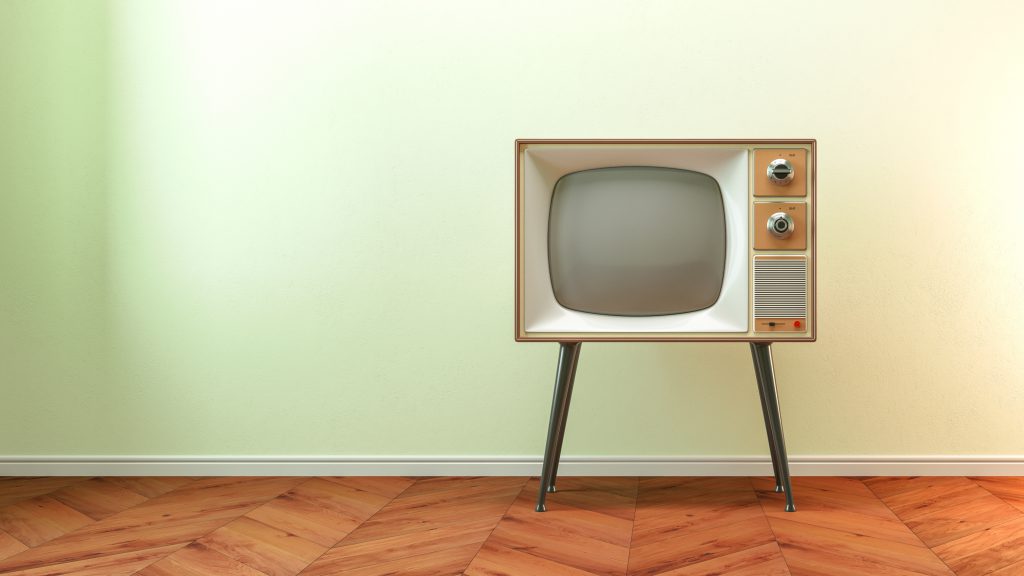
Alaska is consistently ranked as one of the most dangerous states in the U.S., with alarmingly high per capita rates of violent crime. This often meant we didn’t need television to experience true crime stories. Twice, active serial killers brought their mayhem right to us.
In February of 2012, Samantha Koenig was kidnapped from a drive-thru coffee stand across the street from the television station where I worked in midtown Anchorage. That night, I walked out to my car in a heavy snowstorm and drove to the nearby University campus where I was to teach a small class. Afterward, I headed for home, driving back down the same busy street that separated the television station and the coffee stand. It would later be determined that as I did this, Anchorage resident Israel Keyes was laying in wait nearby. He parked his truck in the Home Depot next to our TV station, walked across the street, and abducted Samantha at gunpoint from the coffee stand. He forced her to walk down the busy midtown street to a crosswalk to get back to his truck at about the same time I was driving in the area, oblivious, likely listening to sports talk radio and hustling home for Dateline. Had I seen anything strange? Would I have even noticed when Samantha pulled away from Keyes and attempted to run? Would I have done anything to intervene?
All I managed to remember was the falling snow.
Samantha was killed later that night in a shed behind Keyes’ home in west Anchorage. In the morning, he boarded a plane and went on a cruise with his family. Keyes, it turns out, admitted to at least seven more killings across several states, but police suspected he’d been involved in even more. His depravity was boundless, often stalking popular Anchorage parks for potential victims, and going so far as to bury “murder kits” in the wilderness with supplies he needed to dispose of victims. That this person lived in Anchorage, and plucked a victim from the side of a busy street shook the town deeply—myself included.
Then, in the summer of 2016, there was a rash of random killings on Anchorage city trails. Five people were gunned down over the course of the summer and the public was beginning to panic. Was it a serial killer? Victoria and I walked the trails frequently, and we’d become suspicious of everyone. “Head’s up, we’ve got a possible perp up ahead,” we’d whisper. We’d appointed ourselves experts in profiling too: Woman in yoga pants with a miniature poodle: no threat. Beer-bellied 30-something man ringed with sweat and jogging a stroller: have a nice day! Skateboarders, rollerbladers, and bikers: We’re watching you. Anyone with a sleeve tattoo: Wide berth. Grown men with remote-controlled cars: Aw, that’s sad. Guy walking slowly by himself with his head down: What’s this creeper up to?
After news surfaced that summer of a double-homicide at a popular park, we stopped walking the trails altogether.
That fall I attended an event in downtown Anchorage and joined a group at a bar several blocks away afterward. As we were winding down, I contemplated making the long walk back to my vehicle, but it was late and cold and I’d had a drink or two so I took a cab home. The next morning when I retrieved my vehicle downtown, there was police tape covering an entire city block adjacent to my truck. A police officer had been shot several times and the man who shot him, James Dale Ritchie, was killed in the return fire. Ritchie, we learned a few days later, was in possession of a rare gun that matched all five of the killings that summer. Surveillance footage and eye witness accounts confirmed that he’d been stalking the trails and killing people randomly.
“In a way, staying late at that bar saved my life,” I would later rationalize to Victoria.
“That sounds like a CSI Miami line there,” she said rolling her eyes.
Huh, what are the odds? I thought. Close proximity to two working serial killers within just a few years. Imagine that.
Nine days after Annabella was born, George Floyd, a black man, was killed in Minneapolis after being held under the knee of a white police officer for nearly nine minutes. I watched the video in disgust while holding Annabella in my arms. Between feedings, diaper changes, and sleepless nights, we saw video clips of cities in flames, cops tear-gassing crowds and tossing protesters to the ground. As we sang “Twinkle Twinkle Little Star” at bedtime, downtown shopping districts across the country erupted with violence. We giggled sweetly into our baby’s ears while Americans shouted insults, and possibly COVID-19, into each other’s faces.
It was true crime television theater: chaos in the streets, rampant injustice, economic despair, and a killer virus lurking amongst the crowds.
Would it end in murderrrrr? I could imagine Keith Morrison bellowing.
A newborn, it turns out, doesn’t yet require any real parenting skills. Days mostly consist of feedings, naps, and basic custodial chores, which pause only when one of us casually asks, “can you make sure the baby’s still breathing?” (At which point one of us places a hand on her chest to trigger her startle reflex.) There are no lessons to teach, values to impart, or punishments to hand out. You have time to think about it. I wondered how I might explain all of this human unrest to Annabella one day in the distant future—how humanity can be at once ugly and violent, yet also beautiful and joyful.
It occurred to me that she might like to know the truth. That as much as we tell ourselves it is a saccharin sweet journey, life can actually be quite full of difficulties, injustices, and pain. She might like to know that she will have to be aware, and tough, and decide exactly what is worth fighting for, and what isn’t. That there will be pressure and hard choices and the word “no” will be rather useful. That, if history is a guide, discrimination will simply camouflage itself rather than come to an end. That there will be people with bad intentions, or worse. That all those crime shows glorify the young, beautiful female victims because it sells, and people watch.
She might also like to know that only a treasured few people will have her back, and her theirs. And that, yes, progress is achievable and there are rewards for a well-lived life, this being an equation mostly anchored in how and who you invest your time—simple math in which quality is always greater than quantity.
All of this occurred to me as five-week old Annabella wailed in my face. It was a few days after Father’s Day and Victoria had a doctors appointment, leaving me home alone with the baby. These were scorched-earth cries. Deathly cries. Skull-rattling cries. Annabella refused her bottle, which was precisely where my set of instructions ended. In a panic, I strapped her to my chest in one of those baby-harness carriers—the type you often see doughy fathers plodding along in while staring at their smartphones—and began pacing the room.
I grabbed a book, any book, and started reading.
I opened it up and saw that it was “Harold and the Purple Crayon,” a book written in 1955 by a man named Crockett Johnson. I read aloud as young Harold set out on an evening stroll with his big purple crayon, which he used to create pieces of his environment such as the moon, an apple tree, a boat, and a building. At one point, Harold draws a “terribly frightening dragon,” to guard the apple tree he’s just made. The illustrations are sparse, just purple line drawings across a white page—the kind any of us might be inspired to create with a crayon in hand. At one point, Harold draws big jagged dragon teeth then, startled, he accidentally scribbles wavy lines that turn into water, for which he must rescue himself by creating a sailboat with his magic purple crayon. By the end, Harold simply wishes to return home, so he draws his bedroom window and his bed before laying down to sleep as “the purple crayon dropped on the floor.”
I looked down at Annabella, and just like that she was serene, her big wide raindrop eyes full with promise.
“What would you draw with your purple crayon?” I later asked Victoria.
Annabella was once again unsettled so I suggested she read the book aloud to her, thinking it might have some magical soothing property only babies understood.
“A field of flowers,” she answered immediately. “Without the bees.”
Just a few pages in, Annabella was wailing even louder still. “I’d draw our family,” I said overtop her cries. “I’d draw us.”
“Me too,” Victoria replied. “In a field of flowers.”
“Or a beach,” I added. “Just us. And a beach. Without the sharks.”

A New Dad Reports: The Things No One Tells You About Having a Baby (During a Pandemic)

The personal discovery that led to a storytelling collective, designed to empower fearless creators
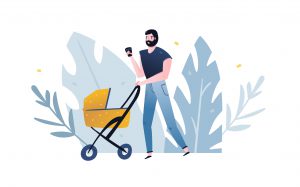
Having a baby can be stressful. Toss in a global pandemic and it’s downright maddening.

What makes a simple walk in Katmai National Park terrifying? Bears, lots of bears.